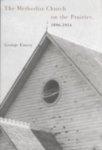
Book Summary
At the turn of the twentieth century economic development transformed Canada's prairie region, as the region's population exploded due to migration from central and eastern Canada and immigration from Britain, the United States, and Europe. This boom severely tested the Methodist Church, Canada's largest Protestant denomination. The church needed more pastors and more money for its expanding mission fields. It was forced to compete with Presbyterians and Anglicans for members, and worried about how to deal with the region's increasing non-Anglo-Saxon population, which lacked Protestant evangelical values and threatened to become Roman Catholic. In The Methodist Church on the Prairies, 1896-1914, the first scholarly study of church history in the prairie region, George Emery uses quantitative methods and social interpretation to show that the Methodist Church was a cross-class institution with a dynamic evangelical culture, not a middle-class institution whose culture was undergoing secularization. He demonstrates that the Methodist's achievement on the prairies was impressive and compared favourably with what Presbyterians and Anglicans achieved.
Book Details
| Book Name | The Methodist Church On The Prairies, 1896-1914 |
| Author | George Emery |
| Publisher | Mcgill-queen's University Press (May 2001) |
| ISBN | 9780773521834 |
| Pages | 296 |
| Language | English |
| Price | 6563 |
